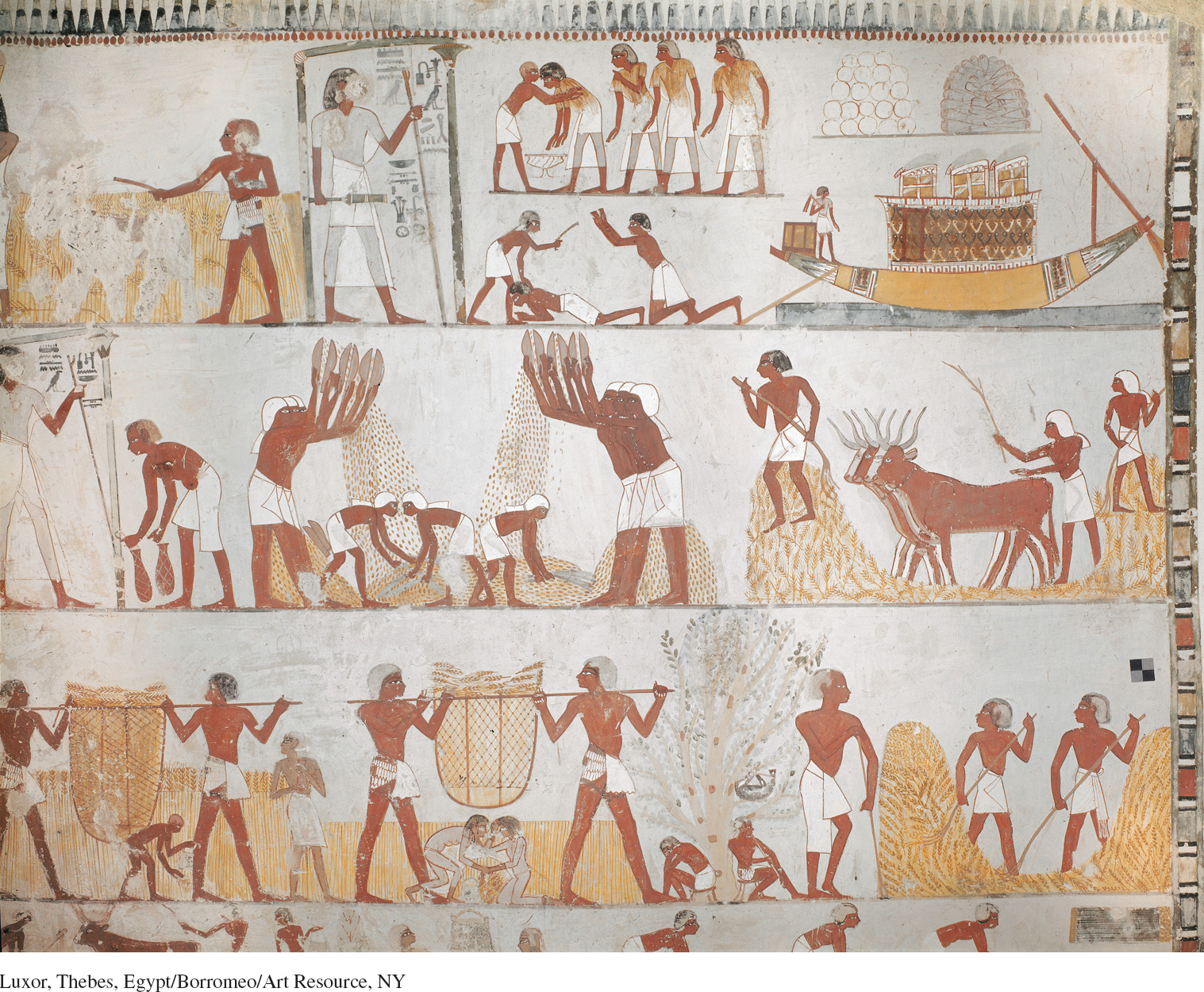Source 2.4: The Social Relationships of Egyptian Agriculture
This Egyptian image from the fourteenth century B.C.E. comes from the tomb of a scribe named Menna. Much like the scribes described in Source 2.3, Menna held an important official role, though he was a commoner by birth. Known as the “scribe of the fields,” he supervised agricultural lands owned by various temples, which produced grain for the royal granaries. So Menna measured the fields, recorded the yields, and generally oversaw the work.
This scene records various phases of agricultural work. The bottom panel shows men carrying baskets of grain, while two young girls and a small boy, perhaps slaves, fight over the droppings. Three old men, indicated by their gray hair, relax under a tree, one of them playing an instrument and another leaning on a stick. In the middle panel, oxen trample the grain to separate the seed from the straw, while several men winnow it, separating the grain from the chaff. At the far left, Menna supervises the operation. In the top panel, Menna, surrounded by hieroglyphs (Egypt’s written script), oversees the beating of one worker while another seems to plead for him. And at the far right, a loaded boat carries away the grain.
Questions to consider as you examine the source:
- What occupational or social groups can you identify in this image? What distinguishes individuals who are working from the others?
- What might the author of “Be a Scribe” have to say about these occupations?
- Many of the images of Menna in his tomb were disfigured, while those of his wife remained intact. Can you infer why he might have incurred such hostility?
Agricultural Scenes from the Tomb of Menna
